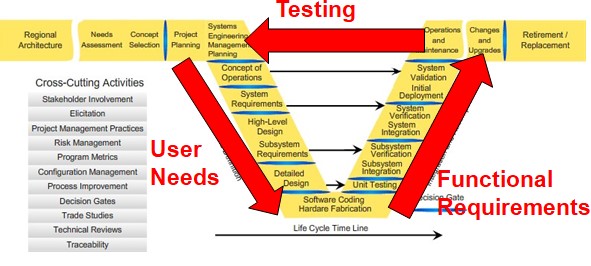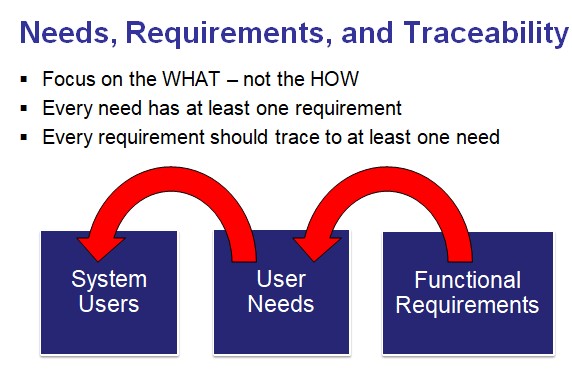


This blog post communicates and demystifies the Top 12 Reasons to use the Systems Engineering Process for Your Smart City Project.
In order to accomplish the goal listed above, we’ll examine the systems engineering process, including:
Before we examine those benefits, let’s first examine exactly what is the systems engineering process and why is it important to developers and operators of Smart City projects.
The Systems Engineering Process (SEP) is an interdisciplinary approach and means to enable the realization of successful systems. It focuses on first defining customer user needs and subsequently the required functionality early in the development cycle, documenting requirements, and then proceeding with design synthesis and system validation.

There are multiple ways to represent the systems engineering process. One way, the Systems Engineering "V" Diagram (seen above), represents the typical life cycle of any system or project. Whether the system being deployed consists of a basic computer-aided dispatch (CAD) system for a transit agency, or a more complex interface between a traffic management center and a public safety agency, all systems will follow some variation of this life cycle.
User Needs are generated through a robust examination of needs from all stakeholder communities that have an interest in the envisioned project. In the next step, each of these needs are used as a foundation in order to develop measurable unambiguous Functional Requirements. Each need must have a functional requirement and each requirement must have an underlying foundational user need. The last step in this process is to create a test plan that confirms the traceability of needs to and from their dependent requirements.
Key to the success of the SEP is the identification of:

When developing your Smart City system, the focus needs to be on “exactly what the system needs to do”, and not on the “how the system will do it”. Every user need should have at least one requirement. Every requirement should be traceable back to at least one underlying foundational user need. In the SEP process, a Traceability Matrix is used to document and verify these critical relationships. The matrix may be maintained directly in a database or spreadsheet for small projects or generated and maintained with a requirements management tool for more complex projects. Using either approach, the matrix provides backwards and forwards traceability between stakeholder needs (and other potential requirements sources), system requirements, design, implementation, and verification test cases.
Next let’s examine the role of standards within the systems engineering process.
Standards are primarily used in the design stage of the systems engineering process, after the higher level of activities, such as the user needs assessment and concept of operations have been developed. During the detailed design phase, specific messages, data elements, communications profiles, and design options are defined. It is important to also remember that standards, can also provide critical user operational needs and interface requirements during the project definition stage.
Now that we have examined the systems engineering process, let’s discuss challenges that often occur when using this approach.
Technical challenges are often more easily overcome than institutional, often additional training can be minimize or alleviate these issues.
Technical challenges include the following:
Institutional challenges often take time to overcome through perhaps employee turnover (e.g. new management open to new ideas) or the emergence of a regional champion to get agency buy-in.
Institutional challenges include the following:
In summation, SEP offers a wide variety of benefits to Smart City project stakeholders, that allow your project to comprehensively address user needs, while delivering a project on-time - and on-budget.

